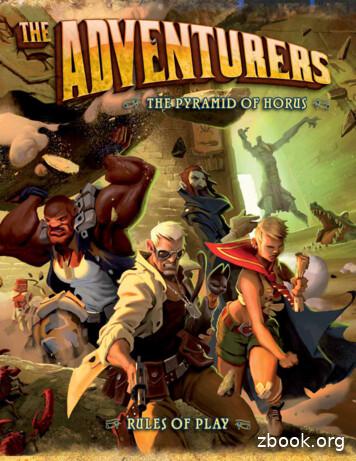Colonial VA Picture Cards
Colonial VirginiaContents Virginia’s Economy- tobacco growing- slave labor- money, barter, credit, debt, savings Settlement Groups in Different Regions of ColonialVirginia Everyday Life in Colonial Virginia- food, clothing, housing, work, & rights Colonial Virginia Government Changing Location of the Capital
Colonial Virginia – Agricultural EconomyColonial Virginia depended on agriculture, (mostlytobacco growing), as its main source of wealth/money.economy:the buying &selling of goods &servicesagriculture:farming
Colonial Virginia – Slavery & AgricultureAfrican men, women, & children were brought to the VirginiaColony & enslaved to work on tobacco plantations. ColonialVirginia was dependent on slave labor.
Colonial Virginia – Slavery & AgricultureThe economy of Colonial Virginia grew as tobacco farminggrew. Tobacco farming grew because of slave labor.slave labor: people forced to work without getting paid
Colonial Virginia – Agricultural EconomyTobacco was grown as a cash crop.cash crop:plants grown to sell in order to make money, not for use by thepeople who grow itColonial Virginia – Agricultural EconomyTobacco was sold in England as a cash crop.EnglandColonialVirginia
Colonial Virginia – Agricultural EconomyTobacco farming was very important in Colonial Virginia. At first, itgrew the local economy & trade because it was farmed with slavelabor & sold as a cash crop. But after many years of farming thesame crops on the same land, the soil lost its nutrients.Colonial Virginia – EconomyMost people in Colonial Virginia did not have money to buy goods &services. People bartered/traded goods & services instead of usingmoney.American Indiansnever used money.They bartered.One Indian istrading apples & tothe other Indian istrading chickens.They barteredapples & chickens.
Colonial Virginia – EconomyMost people in Colonial Virginia did not havemoney to buy goods & services so they bartered.Will you tradethose goods forthis barrel oftobacco?This man is“bartering”tobacco for a tool,shoes, & othergoods.Most people inColonial Virginiabartered withtobacco.barter: to trade or exchange goods & services without using money
Colonial Virginia – EconomyPeople/consumers also bought goods & services on credit.credit: to by goods or services now & then pay for them laterI’ll pay youback when Iharvest mycrops.This man isbuying goodson “credit.”He will pay forthe goodslater.
Colonial Virginia – EconomyWhen people/consumers buy goods or services but pay for them later;that’s called having “debt.”This man is paying a debt to the store keeper. He owed the store paymentfor goods he bought months ago.Here’swhat I oweyou.This man is paying his“debt.”He’s paying for goodshe bought months ago.debt: goods or services owed to someoneColonial Virginia – EconomyThere weren’t any banks in Colonial Virginia.People used tobacco like it was money. This man is giving thestorekeeper tobacco for the goods (things) he needs insteadof money.
Colonial Virginia – EconomyMost people in Colonial Virginia didn’t have any savings.savings:money put away & saved to spend later
Colonial Virginia – FoodPeople depended on natural, human, & capital resources to getthe goods & services they needed.Food choices in Colonial Virginia were limited. People ate localproduce & meat (natural resources).
Colonial Virginia – ClothingPeople depended on natural, human, & capital resources to getthe goods & services they needed.People (human resources) made their own clothes. They madetheir clothes out of cotton, wool, or leather (natural resources).woolShe’s cutting the wool off thelamb.Leather comes fromanimal skin.
Colonial Virginia – HousingMost white people in Colonial Virginia lived in 1 room houses with dirtfloors but some lived in large houses.Houses were made from natural resources (wood, stone, etc.) usinghuman (people) & capital (tools) resources to build them.
Colonial Virginia – HousingMany enslaved African Americans were forced to live altogether in 1room houses with dirt floors.Houses were made from natural resources (wood, stone, etc.) usinghuman (people) & capital (tools) resources to build them.
Colonial Virginia – WorkMost white people in ColonialVirginia were farmers who livedby farming the land they owned.They depended on the naturalresources of their land.Somewhiteplantations.peopleownedThey depended on the naturalresources of their land, thehuman resources of slave labor, &the capital resources of toolsused on their plantations.
Colonial Virginia – WorkAfrican Americans (human resources) were enslaved (forced to workwithout pay) & depended on tools (capital resources) to do theirwork on plantations.
Colonial Virginia – RightsOnly white men who ownedland/property were allowed tovote.They had representation & somecontrol in their government.African Americans didn’t haveany rights. They didn’t have anyrepresentation or control intheir government.Colonial Virginia - CulturePeople from Europe started migrating (moving) to North America.This pushed the American Indian populations inland & changed theculture of Virginia.
Colonial Virginia - CultureGermans & Scots-Irish settled mostly in the Shenandoah Valley,which was along the migration route. The German & Scots-Irishculture was reflected in Shenandoah Valley.
Colonial Virginia - CultureAfrican Americans settled primarily/mostly in the Coastal Plain &Piedmont regions as forced labor on tobacco plantations. TheAfrican American culture was reflected in the Coastal Plain &Piedmont regions.
Colonial Virginia - CultureBefore the settlers arrived, American Indians lived throughout Virginiabut after the settlers came, American Indians were forced to lived inland.The American Indian culture was reflected in Roanoke. Roanoke is anAmerican Indian name.
Virginia’s - CultureToday, Virginia’s culture is still influenced by its past.The map below shows places named after Indian groups.(Chesapeake, Chincoteague, Assateague, Powhatan, Chickahominy, Potomac & Rappahannock Rivers).
Colonial Virginia - Changing CultureWhenever people settle in a new area, they change that culture toreflect their own beliefs & architecture. Before the Europeansettlers came to North America, it was an American Indian culture.BEFOREEuropean settlersAFTEREuropean settlers
Colonial Virginia – Changing CultureArchitecture can tell about/reflect a culture. These architecturalstructures all reflect the culture of the people who built them. barns homes places of worship(churches)Architecture tells about/reflects a culture.Which home reflects a Native American culture?Which home reflects a European culture?
Colonial Virginia - GovernmentAs Colonial Virginia grew, so did its government. Two citizenrepresentatives (2 people) from each division of ColonialVirginia were elected by the people to represent their rightsin the government. These representatives were calledburgesses.burgesses
Colonial Virginia - GovernmentBurgesses were part of the Virginia General Assembly.General AssemblyGovernor’s CouncilGovernorColonial Virginia - GovernmentThe Virginia General Assembly was: created in 1619 the 1st elected legislative body in America made of 3 parts (Burgesses, Governor’s Council, & Governor)General AssemblyGovernor’s CouncilGovernor
Colonial Virginia - GovernmentIn 1619, the Governor called for a meeting of the General Assembly.Burgesses,Governor’sCouncil, it’s 1619and I say we shallall have ameeting!Governor’s CouncilColonial Virginia - GovernmentThe General Assembly was the legislative body that gave thesettlers the opportunity (chance) to control their owngovernment. They could vote for the burgesses which gavethem some government control.General AssemblyGovernor’s CouncilGovernor
Colonial Virginia - GovernmentOnly white men who owned property/land could take part inthe government.
Colonial Virginia - GovernmentBy 1640, the burgesses became its own separate legislativebody, called the House of Burgesses.1640 Burgesses House of Burgesses
Colonial Virginia - GovernmentBy 1640, the burgesses became its own separate legislativebody, called the House of Burgesses.Colonial Virginia – GovernmentThe House of Burgesses later became theGeneral Assembly of Virginia which still exists today.BEFORENOWGeneral Assembly of Virginia
Colonial Virginia - Changing CapitalIn 1698, Colonial Virginia’s capital moved from Jamestown toWilliamsburg because: the drinking water was contaminated by salt water & making people sick diseases – the living conditions were unhealthy a fire destroyed wooden & brick buildings of JamestownColonial Virginia – Changing CapitalIn 1698, the capital was moved from Jamestown to Williamsburg.WilliamsburgJamestown
Colonial Virginia – Changing CapitalWhen the soil became depleted of nutrients & no longer goodfor farming, people began to move west looking for new land tofarm.Also, more & more people were migrating to North Americafrom Europe looking for land to make a home.People in Colonial Virginia began to move west so theythought moving the capital westward was a good idea.Migration West
Colonial Virginia – Changing CapitalThe colonists & the British began disagreeing about taxes & who was incharge. The colonists started to think the British might attack them.The colonists thought moving the capital inland would protect the colonybetter.
Colonial Virginia - Changing CapitalIn 1780, the capital moved again, from Williamsburg toRichmond because: people (the population) were moving west looking for better farm land ornew home more central location it was further from the sea which made it harder for the British toattack themMigration West
Colonial Virginia - Changing CapitalVirginia’s capital changed twice.First, it moved from Jamestown to WilliamsburgThen it moved from Williamsburg to Richmond.The capital of Virginia is still Richmond today.RichmondWilliamsburgJamestown
Virginia’s Capital TodayThe capital of Virginia is still Richmond.Virginia’s CapitolNEWS250 milesRichmond
Colonial Virginia Contents Virginia’s Economy-tobacco growing-slave labor-money, barter, credit, debt, savings Settlement Groups in Different Regions of Colonial Virginia Everyday Life in Colonial Virginia -food, clothing, housing, work, & rights Colonial
Colonial Life 1200 Colonial Life Boulevard Columbia, South Carolina 29210 coloniallife.com 10/08 Colonial Life products are underwritten by Colonial Life & Accident Insurance Company, for which Colonial Life is the marketing brand. 60307-4 Bene t Worksheet For use by Colonial Life Bene ts Representative Coverage: (check one)File Size: 1MBPage Count: 9
4 evelo yor learning on AQA nglih eirary Section 4: Post-colonial ways of reading 4.1 An introduction to Post-colonialism, Post-colonial Theory and Post-colonial literature 36 4.2 What Post-colonial critics do & Post-colonial criticism: an example 37 4.3 Post-colonial criticism: an example 37 4.4 Colonialist criticism 39 4.5 Language 40
3 8 Stone Block Cards 18 Mummy Cards 18 Hededet Search Cards 10 Treasures 2 Chests 6 Scorpions 18 Sobek Search Cards 10 Treasures 2 Chests 6 Crocodiles 8 Adventurer Cards with a Game Aid on the back plus 4 double-sided Game Aid cards. 1 Ankh Card 4 Horus Cards 5 Thoth Cards 5 Anubis Cards 18 Rubble Search Cards 10 Equipment Cards
4000 Series Cards NP-1A-SM-LR 4000 Series Cards NP-1E 4000 Series Cards NP-1F-D-MM 4000 Series Cards NP-1F-D-SS 4000 Series Cards NP-1F-S-M 4000 Series Cards NP-1FE 4000 Series Cards NP-1HSSI 4000 Series Cards NP-1RV2 4000 Series Cards NP-2E 4000 Series Cards NP
3 Consumer understanding of prepaid cards. User understanding of prepaid cards. Perceived benefits. Awareness. Comparison of payment options. Market take up G Types of Prepaid Cards 1.Gift cards 2.Payroll cards 3.Travel (FX) cards 4.Teen (youth) cards. 5.Underserved market. 6.Government/Benefit cards. 7.Per diem 8.Insurance cards 9.Incentive cards
CONTENTS 25 Craft Cards 24 Wood Cards 11 Wild Cards 9 Stone Cards 8 Iron Cards 7 Gold Cards 6 Diamond Cards 5 Creeper Cards 5 TNT Cards? service.mattel.com 4 Card Holders 1 2 3
Cards, Cars and Currency Lesson 2: Credit Cards—A Package Deal . teacher. 16 Cards, Cars and Currency . 4. Explain that there are different kinds of credit cards. Some are major credit cards and can be used at any business that accepts credit cards. These credit cards are issued b
measured by ASTM test method C 173 or C 231. Dimensions – Unless otherwise specified, the minimum length of each barrier section will be 10 feet. It is common for DOTs to ask for lengths of 20 feet or even 30 feet. ASTM C 825 Design Steel Reinforcement – Unless designated by the purchaser, reinforcement shall be designed by the producer and be sufficient to permit handling, delivery .





















